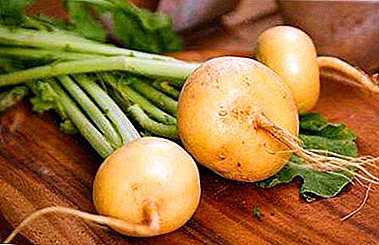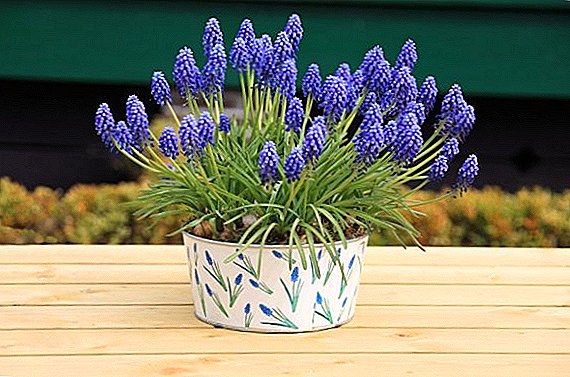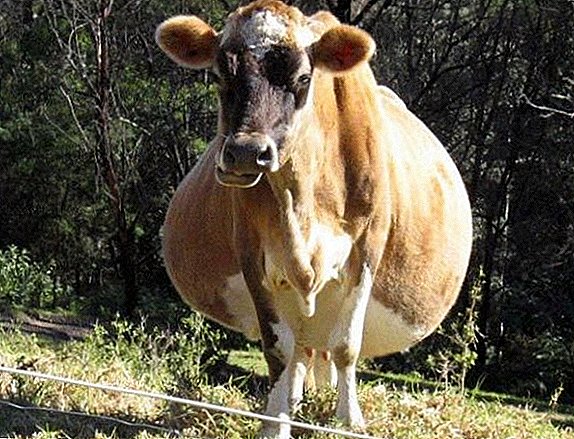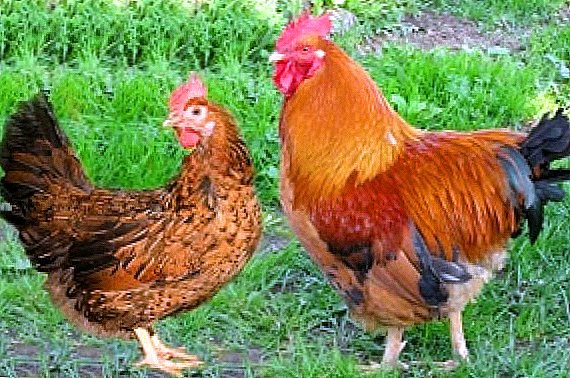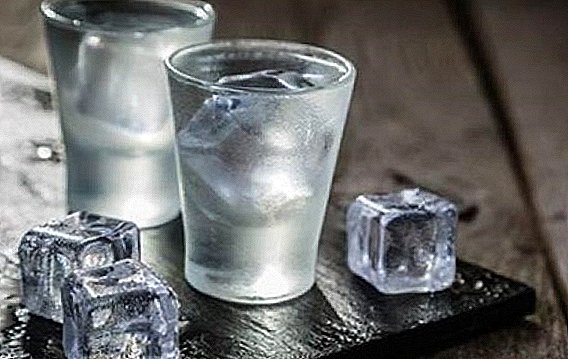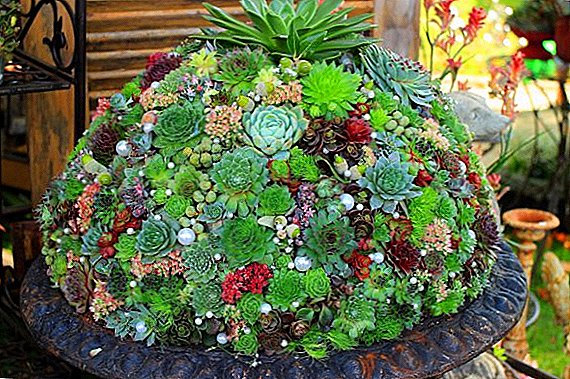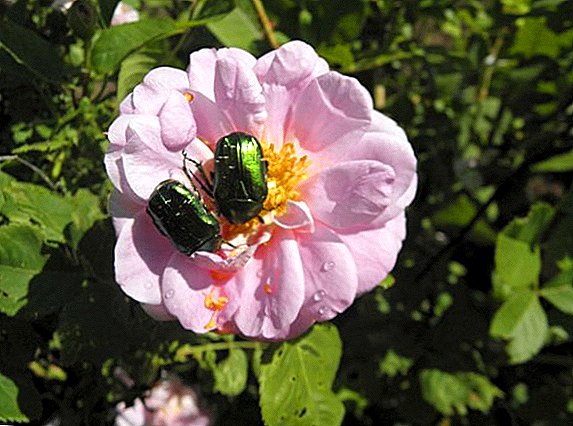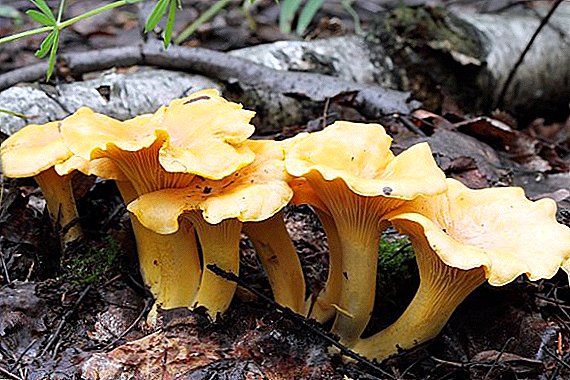 Krasnodar region is a paradise for any mushroom picker. The favorable climate, the puffy lands, all this contributes to the abundance of mushrooms, and the season of their collection lasts from early spring to late autumn. In this article we will talk about the most common types of poisonous and edible mushrooms in Kuban, and how to distinguish them from each other.
Krasnodar region is a paradise for any mushroom picker. The favorable climate, the puffy lands, all this contributes to the abundance of mushrooms, and the season of their collection lasts from early spring to late autumn. In this article we will talk about the most common types of poisonous and edible mushrooms in Kuban, and how to distinguish them from each other.
Edible Mushrooms
Eating species have an original taste, they are very nutritious and healthy (rich in protein and minerals). Also, their collection is a very exciting pastime, an excellent form of leisure, combining outdoor activities and physical activity.
White mushroom
White mushroom (boletus) has a high nutritional value and excellent taste. Very recognizable in appearance. Main characteristics:
- The cap is convex (in the process of growth it drops a little), the color varies from light brown (almost cream) to maroon. The older the boletus, the darker it is. The skin is smooth, sometimes cracks, inseparable from the cap. Diameter - from 7 to 30 cm, sometimes it grows up to half a meter.
- The leg is barrel-shaped, thick, stretched in the process of growth, but the characteristic thickening from below remains. Color is light, sometimes reddish, brownish. Usually there is a specific mesh. Sizes - up to 25 cm in height and up to 10 in thickness.
- The flesh is dense, at the same time juicy and fleshy, light shades. The smell of fresh boletus is not strong, but pleasant.
 Grow in mixed forests, right on the ground. The collection season is summer and autumn.
Grow in mixed forests, right on the ground. The collection season is summer and autumn.Boletus are good as cooked fresh, and after drying. You can cook, fry, pickle. Harmoniously combined with red meat. A special dish - a delicate borovik sauce.
Oyster mushrooms
Oyster mushrooms, they are also oyster mushrooms, are not only wild-growing, but also cultivated on an industrial scale.  Appearance:
Appearance:
- The cap is predominantly light gray with a violet shade, darkens with age. The form is concave, as it grows, it straightens. Diameter up to 20 cm.
- Leg short (about 10 cm), light, cone-shaped, expanding, moving into the cap. Covered with dense white plates.
- The flesh is white, juicy, becomes harder with age.
People who adhere to dietary meals, oyster mushroom mushrooms are perfect in their diet. Consider the most popular types of oyster mushrooms, how to dry them, freeze them and grow them in bags.
They are found in forests where groups grow on the trunks of old, rotting trees and rotten stumps. Harvest season - the end of spring, the beginning of summer and autumn.
Did you know? Oyster mushrooms occupy an honorable second place in industrial cultivation in Russia. On the first - mushrooms. Their percentage in the total collection is 73 and 27%.
It is best to fry oyster mushrooms (can with onions) and serve with vegetables. They are also suitable for filling in pies, and when cooked, they will be an excellent ingredient in soup. 
Grabovik
It is sometimes called browns, to which it is very similar. Outwardly quite noticeable mushroom. You can learn it by the following features:
- The hat looks like a pillow with a flat base, round, slightly bumpy, brownish-gray color, up to 14 cm in diameter.
- The leg is long, scaly, from 5 to 13 cm high, the color is gray-brown, darkening from top to bottom.
- The flesh is soft, fragrant, the bottom is more fibrous, at the cut changes color to light purple.

Oak wood
Oak (red, milky, podoreshnik, podzherzhik) is conditionally edible, because of the content of bitter juice requires special treatment before cooking. Appearance:
- The cap is concave in the middle, asymmetrically rounded, orange-reddish, covered with yellowish vertical plates from the bottom, the maximum radius is 6 cm.
- Leg up to 7 cm in height, 3 cm in diameter, lighter than the top.
- The flesh is light, with a pleasant smell.
We recommend that you familiarize yourself with the types of wetlands, in particular, with aspen, black, as well as with the useful and harmful properties of wetlands and ways of harvesting wetlands for the winter.
It should be searched in deciduous forests at the roots of oak, beech, and hazel. There they grow alone or in groups. Harvest season - the end of summer, mid-October.  Milk eats only as pickles, soaking thoroughly beforehand. It is impossible to dry the milk mushrooms - in this form they are very bitter.
Milk eats only as pickles, soaking thoroughly beforehand. It is impossible to dry the milk mushrooms - in this form they are very bitter.
Hedgehog yellow
You can meet his other names: Gidnum or Dentinum notched. Appearance:
- The cap is smooth, yellow, radius 3-6 cm, smooth to the touch, as it grows in the middle a notch is formed.
- Leg yellow-white, up to 8 cm, expands below.
- The flesh is light, fragile, with a pleasant fruity smell. Older mushrooms taste bitter.
 It grows in mixed forests, near tree trunks, forms dense groups. Season - from mid-August to late fall (until frost). You can cook almost any dish from a grasshopper, it is very similar to chanterelles. It is best to serve fried with meat or fish.
It grows in mixed forests, near tree trunks, forms dense groups. Season - from mid-August to late fall (until frost). You can cook almost any dish from a grasshopper, it is very similar to chanterelles. It is best to serve fried with meat or fish.Purple
Purple lakovitsa (also amethyst or purple) is a very small and beautiful mushroom. Due to non-standard colors, it can easily be assumed that it is poisonous, but it is not.
The whole fungus has a purple-lilac color that fades as it grows. Looks like that:
- The hat is round, the correct form, the maximum size - 5 cm.
- The leg is tall, thin.
- The flesh is tender, almost without flavor.
 Grows in forests, in wet lowlands on a mossy substrate. You can collect from the beginning of summer to the end of autumn. Edible, it is best to add to dishes that combine other mushrooms.
Grows in forests, in wet lowlands on a mossy substrate. You can collect from the beginning of summer to the end of autumn. Edible, it is best to add to dishes that combine other mushrooms.Important! Next to the lacquer, poisonous mushrooms very similar to it often grow. You can distinguish them by the presence of a characteristic "skirt" or a sharp smell of radish. If you have doubts, it is better not to take such mushrooms at all.
Chanterelle real
Tasty, healthy, common mushrooms that are difficult to confuse with something else. Specifications:
- The color of the cap varies from yellow to orange, the shape is concave, the edges are wavy, the diameter is up to 10 cm.
- The leg is smooth, visually inseparable from the cap, the same color with it, the maximum dimensions are 3-7 cm.
- The flesh smells of dried fruit, it tastes spicy, of a dense consistency.
 Chanterelles grow in forests, especially in conifers. You can collect from spring to autumn, the peak of the harvest is in July.
Chanterelles grow in forests, especially in conifers. You can collect from spring to autumn, the peak of the harvest is in July.It will be interesting to read about the beneficial properties of chanterelles and how to distinguish a false chanterelle from a real one.
You can cook almost anything, just pre-wash, dry and boil to remove the bitterness. It is not recommended to dry.
Did you know? Chanterelle is almost never affected by worms. It contains anthelmintic substances that kill their eggs. Therefore, in ancient times, young mushrooms were used as antihistamines.
Granular oiler
Unobtrusive mushroom muted color.  Differs in the following characteristics:
Differs in the following characteristics:
- The hat is round, slightly convex, shades of brown, sometimes with a reddish impurity, slimy and porous on top, lighter below. Diameter up to 20 cm (but more often about 10 cm).
- The leg is straight, thin, light, up to 8-10 cm in height, slightly darker below.
- The flesh is odorless, but pleasant to the taste, dirty yellow color.
It grows in low grass, in conifers (mostly pine forests), often forms groups. Collection from May to November.
Eat boletus most often in the form of pickles and marinades. They are also good in soup, stews, roasts. Some fans prefer to use these mushrooms in their raw form. Before cooking, be sure to remove the skin. 
Mokhovik green
Unremarkable, but edible mushroom.
You can learn it by the following signs:
- The hat of dark olive shades, convex, spongy bottom, and smooth from above. The diameter is usually from 3 to 10 cm, old representatives - up to 15 cm.
- The leg is cylindrical, high, rather narrow, light gray shade.
- The flesh is light, friable, if cut, may acquire a bluish tint.
It grows in forests and shrubs, but prefers lighted areas (undergrowth, forest edges). Mostly lonely growing mushroom.  Good as a preservation, and as a hot dish. You can not boil it beforehand, but be sure to remove the skin.
Good as a preservation, and as a hot dish. You can not boil it beforehand, but be sure to remove the skin.
Important! Eating old mokhovikov in food can lead to poisoning. Collect only young mushrooms of a small size.
Mushrooms real
The honeycomb is real, it is autumn - a parasitic mushroom, but quite usable.  Characteristics:
Characteristics:
- The cap is small, with a radius of up to 5 cm, darker than the legs, flat with uneven edges.
- The stem is thin, up to 2 cm in diameter and long (up to 10 cm), often curved, light brown, darkens downwards.
- The flesh is quite dense, light, exudes a strong mushroom flavor.
It grows on the trunks of dying trees, stumps and shrubs. Forms large colonies. You can catch him at the very end of summer and autumn.
You can cook from honey agarst everything without pre-processing. 
Brownberry ordinary
Also known as birch or small. The mushroom looks like this:
- Cap curved upwards, rounded, smooth, gray-brown.
- The leg is cylindrical, slightly expanding downwards, of a dirty white color, up to 15 cm in height and up to 3 cm in diameter.
- The flesh is light, pleasantly smelling, the consistency of the old mushroom is lost.

Morel present
Quite original in its external characteristics mushroom. How to recognize morel:
- The cap is high, up to 8 cm in diameter, ovate or round, elongated upwards. Color - different shades of gray and brown. Noteworthy shape - the mushroom is speckled with cellular grooves in the frame of folded wavelike convolutions.
- The leg is light, a cylindrical form, height is up to 9 cm.
- The flesh is white, tender and brittle, pleasant to the taste and smell.
Important! The morel ordinary has a deadly double - an ordinary line. It is distinguished by a cap of an irregularly concave shape without cavities characteristic of morels.
It grows in forests, loves sandy and mossy areas, cutting, edge. Harvest season - spring, early summer. Possible second wave of harvest in early autumn. 
Morel is good for drying and freezing, also good in hot dishes.
White truffle
White (aka Trinity or Polish) truffle is the most common truffle in Russia, although not the most valuable representative of this family.
Characteristics:
- Resembles irregular, bumpy shaped potatoes.
- Tubers are almost completely submerged.
- Diameter - up to 15 cm.
- The color is yellowish brown, the older - the darker.
- Weight reaches 0.5 kg.
- Inside it is light yellow, similar in consistency to potatoes.
- Mushroom aroma, with nut notes.
 Habitat - forests with moderately moist, sandy or clay soil. Truffle hides under fallen leaves or needles, it is difficult to find. Landmarks - bumps on the ground without grass, as well as a specific smell.
Habitat - forests with moderately moist, sandy or clay soil. Truffle hides under fallen leaves or needles, it is difficult to find. Landmarks - bumps on the ground without grass, as well as a specific smell.The harvest season is at the end of summer - autumn. The product is very original, and is appreciated for its unusual taste (like meat). It is dried or consumed fresh. It is also very good as a truffle ingredient sauce or self-seasoning.
Did you know? In some countries, white truffle is an expensive delicacy, and in others it is counted among poisonous mushrooms. For example, in Spain its sale is prohibited by law.
Common garlic
Common garlic is often used as a seasoning, because it has a peculiar smell with notes of garlic. Appearance:
- The cap is small (1-3 cm) convex, as it grows, straightens, light brown or yellowish in color, dry to the touch, covered from below with wavy light plates.
- The leg is dark, thin, hollow inside, high (up to 5 cm).
- The flesh is thin, pale, smells like garlic.
 It grows in large groups in the woods, on sand or clay. Harvest season is mid-summer-October.
It grows in large groups in the woods, on sand or clay. Harvest season is mid-summer-October.Garlic can be fried, boiled, pickled. During heat treatment or soaking, it loses its characteristic taste, while drying - the taste is enhanced.
Champignon ordinary
Champignon ordinary (Pecheritsa) - the most common mushroom on the market today. Specifications:
- The cap is white, initially convex, later straightened, silky, from the inside out covered with pinkish-brown plates, up to 10 cm in diameter.
- The stem is also white, cylindrical, mostly flat, the maximum height is 10 cm.
- The flesh is dense, light, with damage gets a pinkish hue.
 Usually grows in grass, prefers humus-rich soils, is found everywhere. The collection takes place from the beginning of May to the end of October.
Usually grows in grass, prefers humus-rich soils, is found everywhere. The collection takes place from the beginning of May to the end of October.Champignons - one of the most popular mushrooms. We advise you to find out how to grow champignons, how to grow them at home, to clean and freeze mushrooms.
Champignon can be prepared absolutely in any way.
Entoloma garden
The garden entrophe (forest, thorns, shield) is a rose-leaf thyroid or subabriac. Appearance:
- The hat looks like a flat cone, glossy white, up to 12 cm in diameter, has wide pinkish plates.
- The leg is light, long, cylindrical in shape, the maximum height is 12 cm.
- The flesh is white, fibrous, may smell like flour or does not smell.
 It grows in forests, but it is also possible to meet an entolome in a park or garden. Often adjacent to raspberries, wild roses, nettles, fruit trees and rose bushes. Collection takes place in the first half of summer.
It grows in forests, but it is also possible to meet an entolome in a park or garden. Often adjacent to raspberries, wild roses, nettles, fruit trees and rose bushes. Collection takes place in the first half of summer.Suitable for marinades, salting, frying. Needs preliminary boiling. 
Poisonous mushrooms
Representatives of this group of fungi are characterized by the presence of toxins dangerous to humans. Depending on the type and dose can cause:
- food poisoning;
- disorders of the nervous system;
- death.
Did you know? The most poisonous mushroom in the world is a pale grebe. It is widespread in Europe, Asia and North America.
Death cap
It belongs to the genus of toadstools. It looks like this:
- The cap is light (greenish or grayish), flat or slightly convex, the edges are uneven, up to 15 cm in diameter.
- The stem is white, cylindrical, up to 16 cm in height.
- The flesh is white, almost does not smell.
 Toadstool is often confused with champignon, russula or greenfinch. To this did not happen, you should remember the characteristics of the toadstool:
Toadstool is often confused with champignon, russula or greenfinch. To this did not happen, you should remember the characteristics of the toadstool:- the presence of Volva (bedspread) - light thickening under the cap;
- the presence of a thickening (bag) at the base of the leg;
- white, soft plates under the cap.
Boletus
Boletus legal or boletus le Gal. Distinguish from edible borovik can be on the following grounds:
- squat - the mushroom grows mainly in breadth;
- smooth hat large, convex, colored shades of pink and orange;
- leg wide, swollen, on top of a characteristic reddish mesh.

Amanita red
This mushroom is not to be confused with anything. Classic amanita, as in children's pictures:
- The cap is large (up to 20 cm), flat or slightly rounded, sometimes concave. Hat color is red. On the skin characteristic warty white flakes. Sometimes a white “skirt” leaves the cap.
- The leg is high, cylindrical, white.
- The flesh is slightly yellowish.

Amanita Panther
The panther (gray) fly agaric is not as bright as a red, but no less poisonous representative. Looks like that:
- Hat muted tones: light brown, brown, gray. In diameter to 12 cm, rounded, slightly convex. The glossy skin is covered with whitish flakes, sometimes white coat remains are hanging from below.
- The leg is straight, cylindrical, white, up to 12 cm in height, sometimes a ring is present.
- The flesh is light, watery consistency, smells unpleasant.

False worm
False insects - the cumulative name of several species of fungi that are dangerous to humans in appearance is very similar to edible mushrooms.
Important! False mushrooms like the same places as the real ones, and they settle in exactly the same colonies on stumps and trees. If you have even the slightest doubt - do not collect such mushrooms!
The main distinguishing feature of false agarics is the absence of a “skirt”, a foil ring on a leg. In addition, there are other signs of dangerous experience:
- foul odor (similar to earthy);
- bright coloring of the caps (variations of yellow and red) and their smoothness;
- dark plates under the caps (they are bright for real ones).

Satanic mushroom
Bolet Sataninsky - a close relative of edible boletus.
Features:
- The cap is rounded, pillow-like, large (up to 30 cm), whitish-gray, with dirty stains.
- The stem is bright (red), short and thick.
- The flesh in the cap is yellow, in the leg is red, on the cut it turns blue, it smells unpleasant.
The mushroom has a very specific appearance; it is rather difficult to confuse it with something else. 
Thin pig
Svushka (barn, filly) is not poisonous by itself, but it is dangerous in that it accumulates all kinds of toxins from the external environment into the pulp.
Svushka appears long before other mushrooms and abundantly fruits until late autumn. Consider the most popular types of pigs.
You can learn it by the following characteristics:
- The cap is large (up to 15 cm), usually flat, but may have a bulge or funnel in the middle, fleshy, brown.
- The stem is thin (1.5 cm in diameter), but long (up to 9 cm in height).
- The flesh is friable, yellowish, becomes brown in places of damage.
Some mushroom pickers consider the pig conditionally edible. But amateur mushroom pickers use this type of mushroom is strictly prohibited. 
Entomoma is poisonous
Larger than other types of entolom. Characteristics:
- A large cap (up to 25 cm) of various shades of gray, relatively flat, irregularly rounded.
- Leg cylindrical, gray, reaches 15 cm in height.
- The flesh is white, has a rancid smell.
 The poisonous entolom can be confused with a new creature, garden entoloma, champignon, ryadovkoy and govorushkoy. To distinguish from them the poisonous fungus can be on the following grounds:
The poisonous entolom can be confused with a new creature, garden entoloma, champignon, ryadovkoy and govorushkoy. To distinguish from them the poisonous fungus can be on the following grounds:- wide, rare plates on the cap;
- lack of a ring on a leg.
With proper theoretical training, you can easily distinguish the poisonous fungus from the edible. It is important to be extremely attentive, and not to tear mushrooms, the origin of which you are not completely sure.


